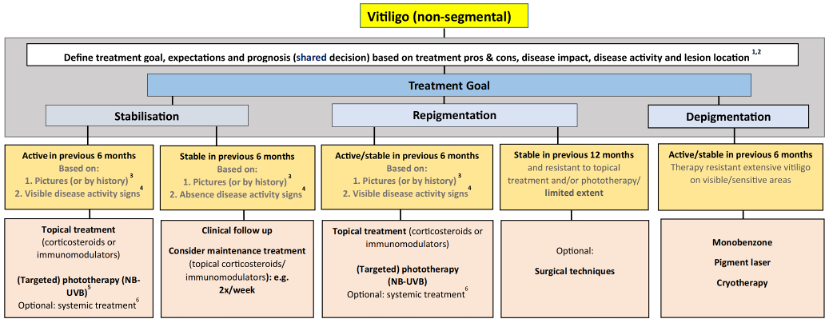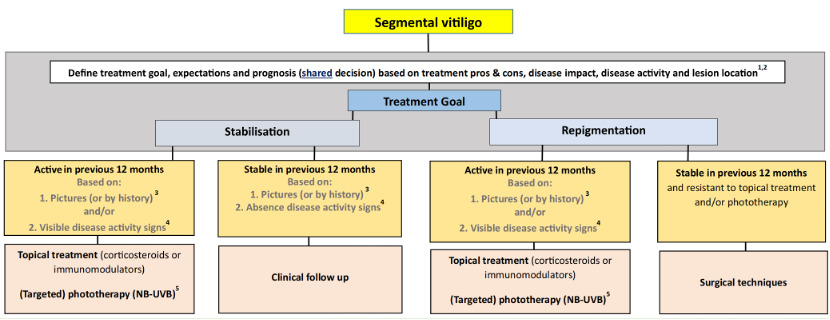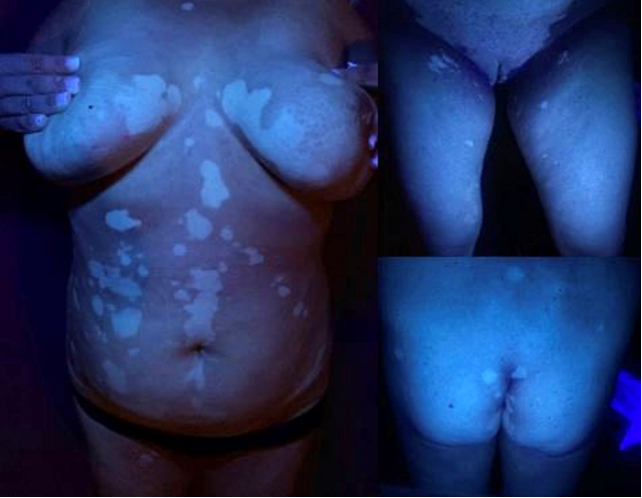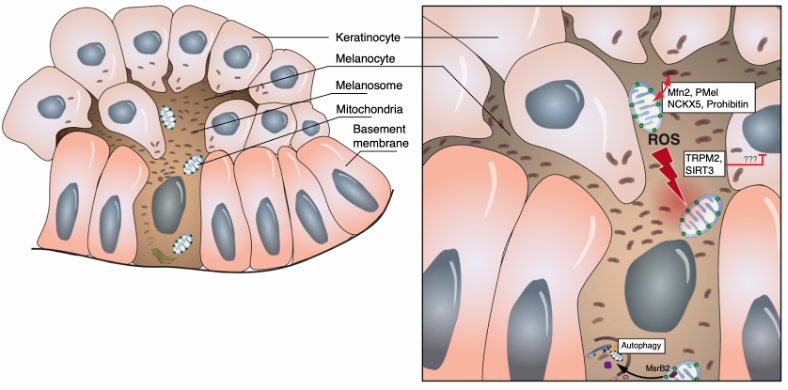10 laatste nieuws over de behandeling van vitiligo in november 2023
1. Worldwide expert recommendations for the diagnosis and management of vitiligo:Position statement from the International Vitiligo Task Force.
Part 1:towards a new management algorithm
Treatment of vitiligo is challenging and often requires long-term treatment. To improve the management of vitiligo globally, an up-to-date guideline based on international consensus and harmonization is needed. A consortium of 42 international vitiligo experts and 4 patient representatives participated in the development of this consensus statement.
The new principles highlight the importance of shared decision-making. Dermatologists are encouraged to fully discuss goals with patients on the basis of clinical examination and explain prognosis and expected treatment results to patients in detail. Assessment of disease activity remains the basis for a tailored approach to patients with vitiligo.


2. Worldwide expert recommendations for the diagnosis and management of vitiligo:
Position statement from the international Vitiligo Task Force-Part 2:Specific treatment recommendations.
The recommendations in Part II specifically review the latest evidence regarding the use of local treatments (steroids, calcineurin inhibitors, and Jak inhibitors) and systemic treatments (including steroids and other systemic immunomodulators or antioxidants). Different forms of phototherapy
are summarized (NB-UVB, photochemotherapy, excimer devices and home phototherapy), which
are often combined with other treatments. Interventional approaches as well as depigmentation strategies suggest specific indications. Finally, the current status of innovative and targeted therapies under development is discussed.
3.Vitiligo induced by dupilumab treatment: A case series
Dupilumab is commonly used for atopic dermatitis and other related diseases and rarely causes vitiligo. This article reports 7 cases of vitiligo induced or worsened in patients treated with dupilumab for severe atopic dermatitis or
nasal polyps.
Patients experienced induction or worsening of vitiligo, usually nonsegmental facial symptoms, an average of 3.4 months after starting dupilumab treatment, and the prognosis was favorable with topical treatment or narrowband
UVB phototherapy. The authors concluded that dupilumab may disrupt normal skin homeostasis by blocking type 2 inflammation, exacerbating type 1 inflammatory responses and inducing vitiligo.

4. Topical ruxolitinib: A new treatment for vitiligo
Vitiligo is a chronic autoimmune skin disease that is difficult to treat, and topical treatment may have fewer systemic long-term side effects. Ruxolitinib is a selective JAK1/2 inhibitor recently approved in the United States for the treatment of non-segmental vitiligo in patients older than 12 years of age.
This article reviews relevant research data. The results obtained so far suggest that 1.5% ruxolitinib cream is an effective method for treating vitiligo.
5. Mitochondria-Melanocyte cellular interactions:An emerging mechanism of vitiligo pathogenesis
Mitochondria not only synthesize ATP, but also have potential regulatory effects on melanocyte function.
Loss of melanocytes is seen in vitiligo lesions, but the exact mechanism of their destruction is unknown. The authors of this review attempt to discuss and relate mitochondrial functions and their role
in intercellular and intracellular communication in the pathogenesis of vitiligo.
Mitochondria are closely related to melanosomes, and the molecular involvement of melanocyte-
keratinocyte communication and melanocyte survival is a new paradigm in melanin formation and
may explain the mechanism of vitiligo. This undoubtedly provides a new perspective for
our understanding and management of vitiligo and the future development of mitochondrial
targeted treatments for vitiligo.

6. The possible role of Wnt/β-catenin signaling in the treatment of vitiligo
7. Vitiligo and systemic lupus erythematosus: a population-based epidemiological study
8. The preventive and therapeutic effect of topical tacrolimus on unstable acral vitiligo: a randomized prospective study.
9. Clinical efficacy of methotrexate in the treatment of vitiligo: a retrospective study and literature review.
10. Efficacy and safety of pulse steroids combined with methotrexate in the treatment of vitiligo: a preliminary retrospective case series
